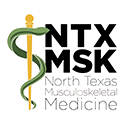Dr. Dennis Minotti featured in Ask the Expert
In a recent article for Ask the Experts, Dr. Minotti discusses the most common questions from patients about Regenerative Orthopedics. As a young physician, Dr. Minotti sought more effective methods to treat patients with conditions that were not responding to traditional treatments. Discovering the developing field of Regenerative Medicine, he became a pioneer in these innovative procedures.

